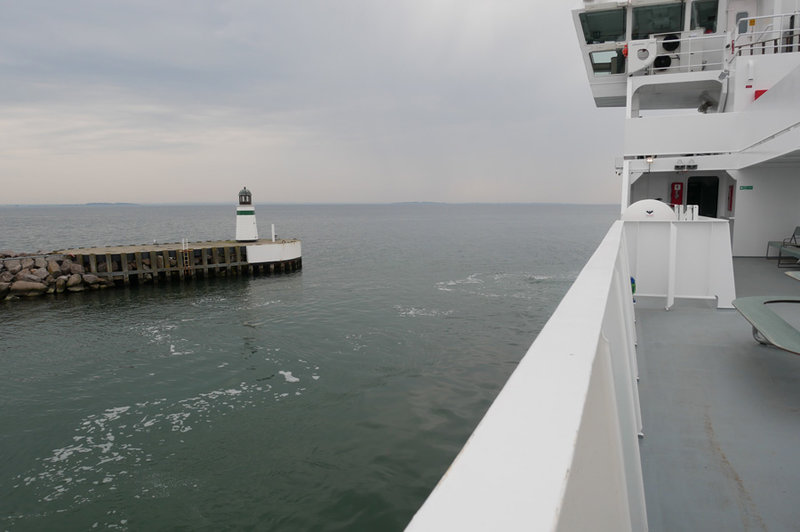Propulsion
Ellen E-Ferry: a glimpse of the future of ferries
The Ellen electric ferry is set to welcome its first paying customer. Andrew Tunnicliffe speaks with about its design and how it could shape the future of mid-distance ferry crossings.
All image courtesy of E-Ferry
In 2015
the European Commission (EC) announced a project to build the world’s first fully-electric ferry,able to travel more than 20 nautical miles, thanks to what would be the world’s biggest battery – at least, in a maritime setting.
E-Ferry – a four-year, €21.3 million project – is funded by the EC and industry as part of the Horizon 2020 Research and Innovation programme.
“Ellen, as the ferry has been christened, is a fully electric, medium sized car and passenger ferry, run only on power from batteries charged in harbour,” explains project coordinator Trine Heinemann, “It will cross distances of up to 22 nautical miles (38km) between charging.”
Able to carry 31 cars or five trucks, and as many as 198 passengers at capacity, Ellen will sail between Søbyon the island of Ærø, and Fynshav in Denmark, operated bythe Municipality of Aeroe (ÆrøKommune).
At almost 60m long and 13m wide, and with a top speed of between 13k-15.5k, it will cut the travel time of a single trip to 55 minutes, down from the 70 it takes a fuel-powered vessel currently operating on the route.
A significant part of the design specification was to use lightweight materials, ensuring the ferry uses as little power as possible. The use of steel was restricted to just the specially designed hull, with the bridge constructed from aluminium instead. Deck furniture is constructed from recycled paper rather than wood.
Designers also opted to remove the onboard ramps, instead using shoreside ones. The car deck is also positioned on the same level as passenger areas; in total, the ferry weighs 650t.
Stuart Rivers, CEO of Sailors’ Society.
Image courtesy of Sailors’ Society
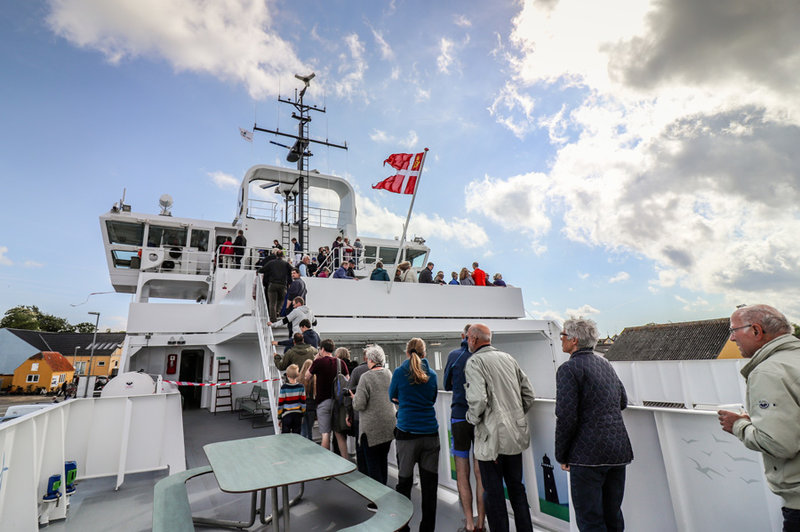
The Ellen battery
Ellen has two battery rooms, both below deck in the middle and towards the stern. Each contains ten battery strings – made up of 42 unique modules– offering a total capacity of 2,150kWh per room. When fully charged the vessel boasts 4.3MWh of power, more than enough to complete its 22 nautical mile round-trip between charges.
Heinemann says power redundancy, critical in transportation, was a challenge, particularly given the lack of a backup power generator. “The required redundancy was achieved through the designing of the system around individual battery modules. Each module comprises multiple cells connected in series or parallel. These modules are placed in one of the two battery rooms, with each operating independently. With 20 banks in total, should one fail, the other nine will take over.”
The required redundancy was achieved through the designing of the system around individual battery modules
As well as having the largest known maritime battery capacity, the ferry is one of the first in the world to have no emergency generator.
In 2015, Leclanché announced it was developing the G/NMC type-approved batteries, based on a system already used for land transport. They were optimised in several ways, including a 20% weight reduction.
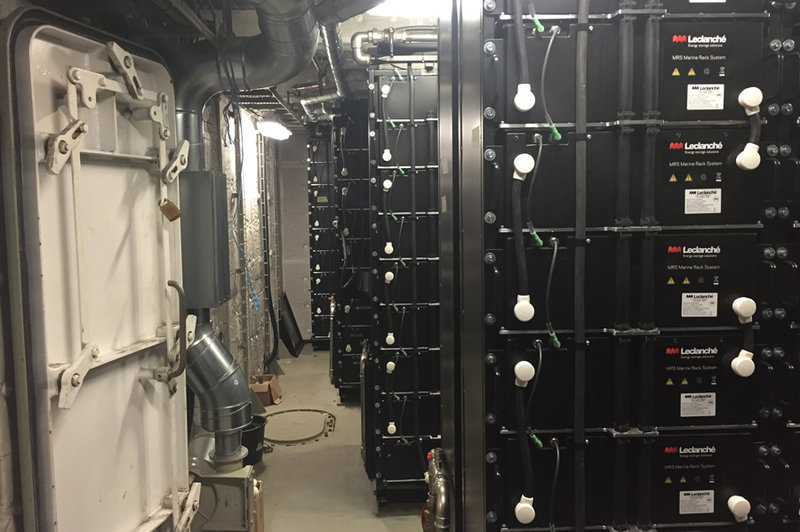
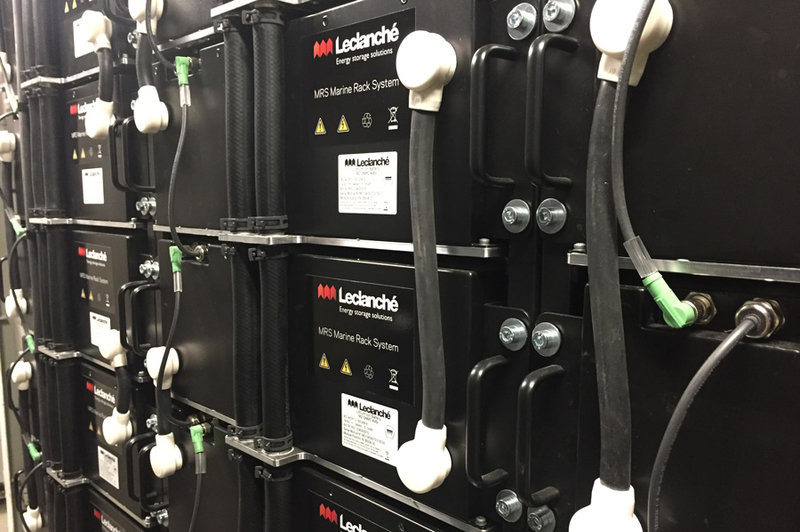
Charging the ferry
A further weight saving method was to place the heavy charging equipment on shore. Heinemann explains: “We charge in our home harbour only. The charging arm is placed on the ramp of the harbour so it moves with the tide. We start in the morning with a fully charged ship. After the first trip we top off as much as we can before leaving harbour again. We do the same for the next six trips before mooring for the night and fully charging again.”
Finland’s Mobimar Ltd supplied the unique charging arm and onshore station. With its own power supply, the charging house comprises four transformers, converting the supply to DC before it is pushed to the batteries through cables along the charging arm.
After the first trip we top off as much as we can before leaving harbour again
Danfoss Editron supplied Ellen’s full-electric drivetrain, comprising two 750kW propulsion and two 250kW thruster motors controlled by DC/AC inverters. This innovative propulsion system means the ferry reduces noise and waves considerably, adding to its green credentials.
Docking is assisted by 250kW bow thrusters, helping increase manoeuvrability and energy efficiency as they are only used in port.
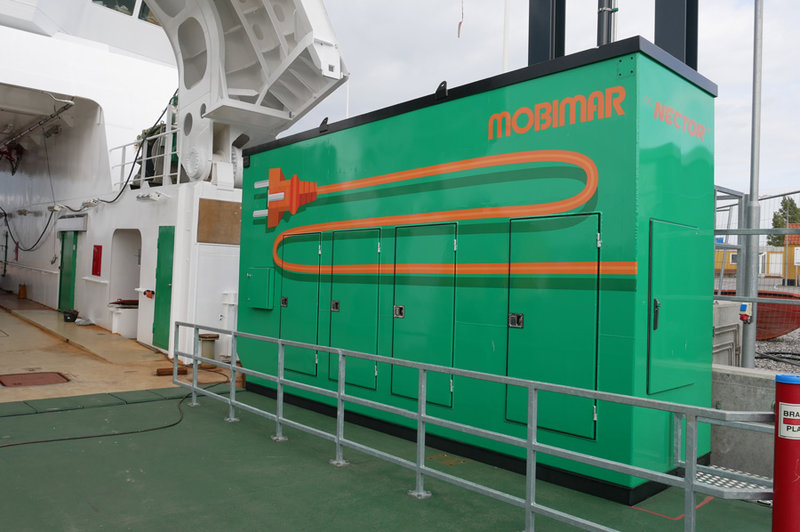
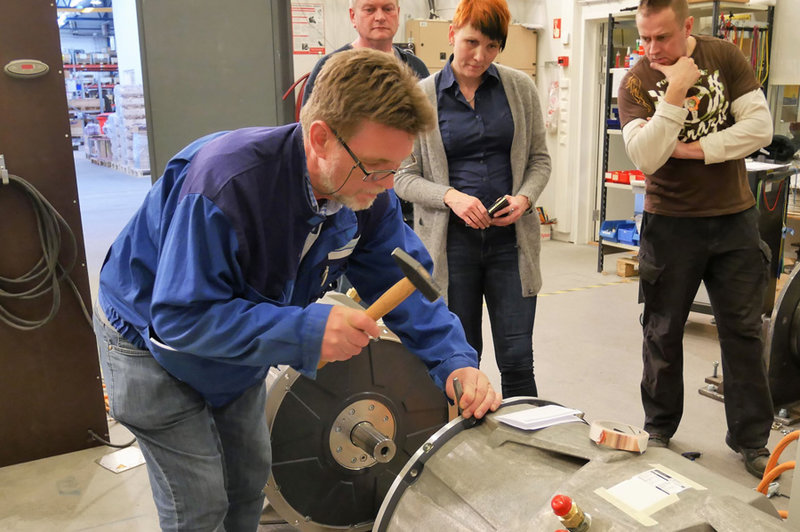
The environmental case for electric ferries
“In operation [Ellen] will be totally clean, no CO2, no NOx and no particulates because we run entirely on electricity,” Heinemann says.“We plan to buy certified green energy so we don’t pollute somewhere else in the chain.” It is estimated the ferry will cut emissions by as much as 2,000t of CO2, 41.500kg of NOx and 1.350kg of SO2 annually, compared with fuel-powered counterparts.
Because there is no engine room or hydraulics onboard, and the battery system is fully automated and operational from the bridge, the ferry only requires a crew of three instead of the five ordinarily needed for a vessel of its kind.
We plan to buy certified green energy so we don’t pollute somewhere else in the chain
Although it will cost approximately 40% more than traditional vessels, fuel costs are anticipated to be 40% less, while reduced crew and less maintenance will help cut costs further long-term. According to research conducted by Siemens in 2016, on average it takes five and a half years for an electric vessel to pay for itself.
“Ellen is an excellent example of the future for electric transport: cleaner, greener and more efficient," said Danfoss CEO Kim Fausing. "It is a great project which demonstrates the potential for electric ferries to end users and the industry itself.”
